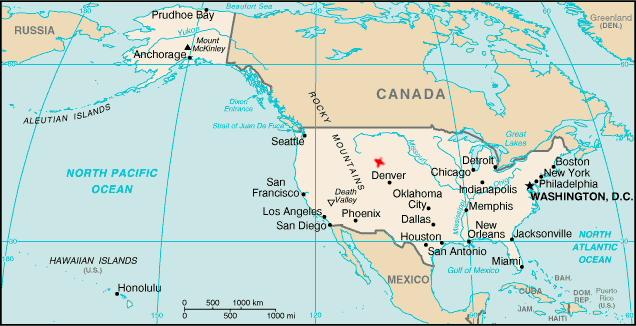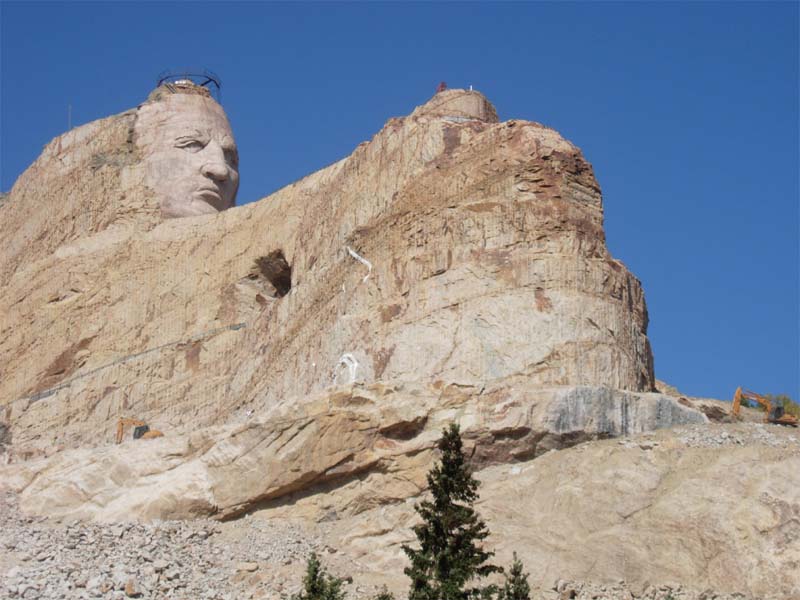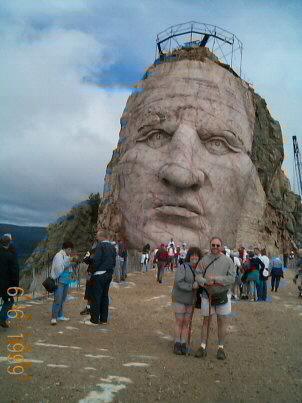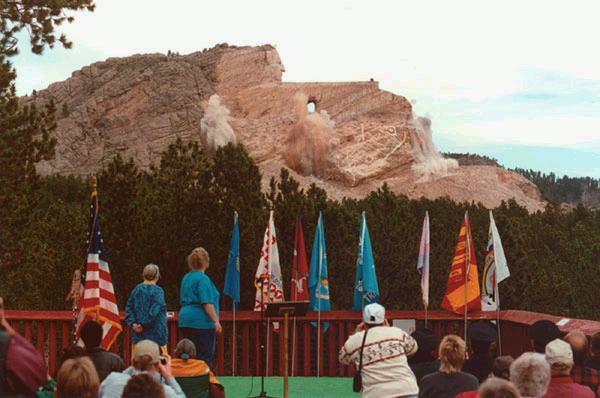 |
 |
CRAZY HORSE MEMORIAL - USA


| Location: | Geographic coordinates: | Area: | Area - comparative: |
| North America, bordering both the North Atlantic Ocean and the North Pacific Ocean, between Canada and Mexico. | 38 00 N, 97 00 W | total: 9,629,091 sq km | About half the size of Russia; about three-tenths the size of Africa; about half the size of South America (or slightly larger than Brazil); slightly larger than China; about two and a half times the size of Western Europe |
| Population: | Languages: | Capital: | Currency: |
| 280,562,489 (July 2002 est.) | English, Spanish (spoken by a sizable minority) | Washington | US dollar |



| Types of rocks used on the monument: | Granite (Igneous rock) |
In the beginning, he was just a man. A Sioux Indian. A warrior. A mystic. Today, he is becoming a mountain. His sculptor, Korczak, was born in Boston, Sept 6, 1908, the same day thirty one years earlier, that Crazy Horse had died from stab wounds. Korzczak Ziolkowski came to the Black Hills of South Dakota in 1947 at the request of the Sioux Indian Chiefs to build a memorial. He came alone at 38 years of age, carrying only $137 dollars in his pocket and his vision of what the memorial would be. He built a 741 wooden staircase to the mountain top (6,740 ft above sea level) and strategically inserted four sticks of dynamite and blasted off 10 tons. The first of millions of tons lay in front of him. He took then the equivalent of a paint brush, his gas powered jackhammer, and he began carving a mountain, telling the story of the spirit of Crazy Horse in granite, the warrior's left arm thrown out, pointing precisely to "my lands, where my dead lie buried." Korczak died in 1982 at the age of 74, his life's work undone. Crazy Horse died in 1877 at the approximate age of 35.
The memorial is geologically very similar to Mount Rushmore: a pod of granitic migmatite surrounded by schists and slates. This and many other knobs in the Black Hills stand above their surroundings because they are more resistant than the metamorphic rocks around them.
© Guillermo Rocha, P. G. / Brooklyn College Geology Department